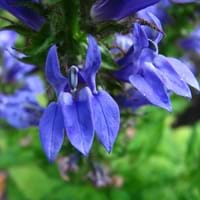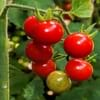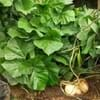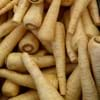Type
Vegetable
Flowering Plants, Shrubs
Origin
Mexico, Central America, South America
America
Types
Red, Yellow and Baby Plum
Lobelia aberdarica, Lobelia leschenaultiana, Lobelia canbyi
Number of Varieties
Not Available
Habitat
Cultivated Beds
Open areas, River side, Woods
USDA Hardiness Zone
11-15
4-9
Sunset Zone
A1, A2, A3, H1, H2, 1a, 1b, 2a, 2b, 3a, 3b, 4, 5, 6, 7, 8, 9, 10, 11, 12, 13, 14, 15, 16, 17, 18, 19, 20, 21, 22, 23, 24
A1, A2, A3, H1, H2, 1a, 1b, 2a, 2b, 3a, 3b, 4, 5, 6, 7, 8, 9, 10, 11, 12, 13, 14, 15, 16, 17, 18, 19, 20, 21, 22, 23, 24
Habit
Upright/Erect
Cushion/Mound-forming
Flower Color
Yellow
Blue, Red, Violet, White
Flower Color Modifier
Bicolor
Bicolor
Fruit Color
Red
Not Available
Leaf Color in Spring
Green, Dark Green
Dark Green
Leaf Color in Summer
Green, Dark Green
Green
Leaf Color in Fall
Green, Dark Green
Green
Leaf Color in Winter
Green, Dark Green
Not Available
Leaf Shape
Lanceolate
Cushion
Plant Season
Spring, Summer, Fall
Fall, Summer
Sunlight
Full Sun
Full Sun, Partial shade
Type of Soil
Loam, Sand
Well drained
The pH of Soil
Neutral
Acidic
Soil Drainage
Well drained
Well drained
Bloom Time
Indeterminate
Early Fall, Early Summer, Late Summer, Mid fall, Mid Spring
Tolerances
Drought
Not Available
Where to Plant?
Container, Ground, Pot
Container, Ground, Pot
How to Plant?
Seedlings
Seedlings
Plant Maintenance
Medium
Medium
Watering Requirements
Requires regular watering
Form a Soil ring to water efficiently, Prefer drip-irrigation instead of Over-head watering, Requires watering in the growing season, Use Mulches to help prevent water loss during hot and windy weather, Water twice a day in the initial period
In Summer
Lots of watering
Lots of watering
In Spring
Moderate
Moderate
In Winter
Average Water
Average Water
Soil Type
Loam, Sand
Well drained
Soil Drainage Capacity
Well drained
Well drained
Sun Exposure
Full Sun
Full Sun, Partial shade
Pruning
Dispose of diseased portions, Remove dead leaves
Cut or pinch the stems, Prune after flowering, Prune to control growth, Remove dead or diseased plant parts, Remove deadheads
Fertilizers
organic fertlizers
All-Purpose Liquid Fertilizer
Pests and Diseases
fungus
Botrytis Blight, Crown rot, Pythium rot, Stem spot
Plant Tolerance
Heat Tolerance
Drought
Flower Petal Number
Single
Single
Fragrant Bark/Stem
Yes
No
Foliage Texture
Medium
Fine
Foliage Sheen
Matte
Matte
Attracts
Butterflies
Birds, Hummingbirds
Allergy
Diarrhea, gastro-intestinal problems, Headache, Itchiness, Vomiting
coma, convulsions, Diarrhea, exhaustion, Nausea, salivation, Vomiting, weakness
Aesthetic Uses
As decorated salad
Beautification, Bouquets, Showy Purposes, Used for decorating walls, fences, gates, hedges, etc.
Beauty Benefits
Acne, Glowing Skin, Maintains teeth healthy
Not Available
Environmental Uses
Air purification
Air purification
Medicinal Uses
Antioxidants, Metabolism
Asthma, Bronchitis, Croup
Part of Plant Used
Fruits
Leaves, Seeds
Other Uses
Cosmetics, Culinary use, For making oil, Repellent
Showy Purposes
Used As Indoor Plant
Yes
Yes
Used As Outdoor Plant
Yes
Yes
Garden Design
Container, Edible, Herb, Vegetable, Houseplant
Bedding Plant, Bog Garden, Edging, Foundation, Hanging Basket, Houseplant, Mixed Border, Rock Garden / Wall
Botanical Name
LYCOPERSICON esculentum 'Tiny Tim'
Lobelia laxiflora
Common Name
Cherry Tomato
Lobelia
In Hindi
चेरी टमाटर
Lobelia
In German
Kirschtomate
Lobelie
In French
Tomate cerise
Lobelia
In Spanish
Tomate cherry
Lobelia
In Greek
Ντοματάκι
λοβηλία
In Portuguese
Tomate cereja
Lobélia
In Polish
Pomidor wiśniowy
Lobelia
In Latin
Cherry LycopersiciSusceptibility
Lobelia
Phylum
Magnoliophyta
Anthophyta
Class
Magnoliopsida
Dicotyledonae
Order
Solanales
Asterales
Family
Solanaceae
Campanulaceae
Clade
Angiosperms, Asterids, Eudicots
Angiosperms, Asterids, Eudicots
Tribe
Solaneae
Not Available
Subfamily
Solanoideae
Lobelioideae
Number of Species
Not Available
Season and Care of Cherry Tomato and Lobelia
Season and care of Cherry Tomato and Lobelia is important to know. While considering everything about Cherry Tomato and Lobelia Care, growing season is an essential factor. Cherry Tomato season is Spring, Summer and Fall and Lobelia season is Spring, Summer and Fall. The type of soil for Cherry Tomato is Loam, Sand and for Lobelia is Well drained while the PH of soil for Cherry Tomato is Neutral and for Lobelia is Acidic.
Cherry Tomato and Lobelia Physical Information
Cherry Tomato and Lobelia physical information is very important for comparison. Cherry Tomato height is 3,050.00 cm and width 30.50 cm whereas Lobelia height is 0.54 cm and width 0.38 cm. The color specification of Cherry Tomato and Lobelia are as follows:
Cherry Tomato flower color: Yellow
Cherry Tomato leaf color: Green and Dark Green
Lobelia flower color: Blue, Red, Violet and White
- Lobelia leaf color: Dark Green
Care of Cherry Tomato and Lobelia
Care of Cherry Tomato and Lobelia include pruning, fertilizers, watering etc. Cherry Tomato pruning is done Dispose of diseased portions and Remove dead leaves and Lobelia pruning is done Cut or pinch the stems, Prune after flowering, Prune to control growth, Remove dead or diseased plant parts and Remove deadheads. In summer Cherry Tomato needs Lots of watering and in winter, it needs Average Water. Whereas, in summer Lobelia needs Lots of watering and in winter, it needs Average Water.





